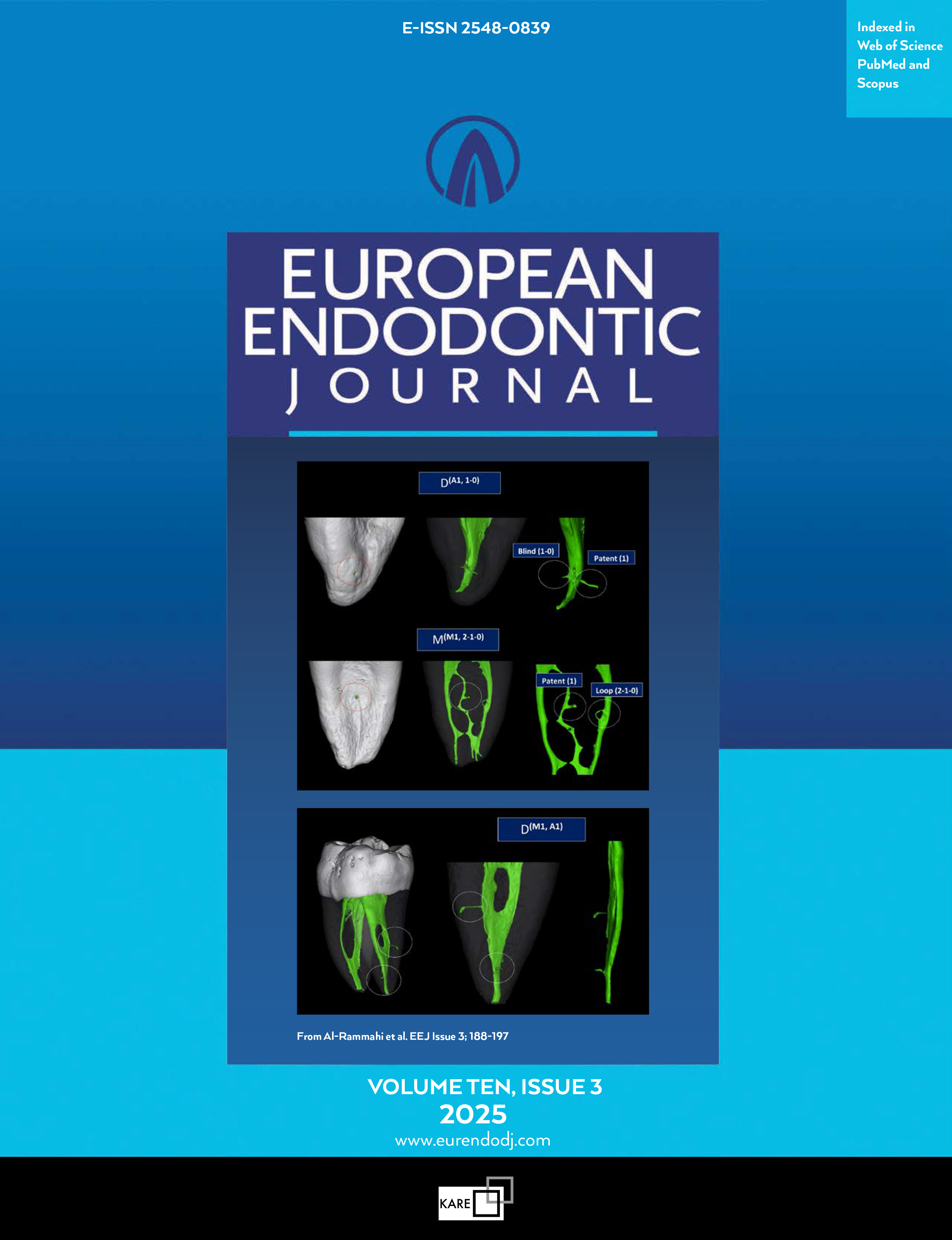Metrics
2024 IMPACT FACTOR
5 year Impact Factor
Eigenfactor Score
2024 CiteScore
Journal Citation Reports
(Clarivate 2025, JIF Rank)
The Impact of Different Final Irrigation Activation Techniques on Postoperative Pain in Single Rooted Mandibular Premolar Teeth: A Randomised Clinical Trial
Yasmin Tawfik Sobh1, Mai Hamdy21Department of Endodontics, Sinai University, Faculty of Dentistry, Ismailia, Egypt2Department of Endodontics, Suez Canal University, Faculty of Dentistry, Ismailia, Egypt
Objective: The trial was conducted to assess the impact of passive ultrasonic irrigation, XP endo finisher, AF
max file, and manual dynamic agitation on postoperative pain and analgesic consumption at 6 h., 12 h., 24 h.,
48 h., 72 h., and a week later on single-rooted lower premolar teeth with acute irreversible pulpitis and apical
periodontitis.
Methods: A total of 64 eligible patients were randomized into four equal groups (n=16 per group). Considering
the irrigation activation approach, participants were separated into four groups as follows: passive ultrasonic
irrigation, XP-endo Finisher, Fanta AF max file, and manual dynamic agitation. Following the root canal
procedure, the intensity of postoperative discomfort was measured by a verbal rating scale. The frequency
and quantity of analgesics used were recorded. The data were analysed by using analysis of variance (ANOVA)
and chi square tests (p=0.05).
Results: There was a statistically significant difference between the percentage of preoperative and postoperative
pain at most of the follow-up period in each group (p<0.001). A significant difference in the postoperative
pain level and analgesic consumption was found among groups and most of the time intervals (p<0.05).
The excessive percentage of postoperative pain and analgesic intake was found in the MDA group, followed
by the Max file and the XPF, while the lowest postoperative pain and analgesic intake were related to the PUI
group. There was significant difference between the PUI and MDA groups in the degree of pain severity and
increase in analgesic intake at 72 h (p<0.05). Regarding the percentage of swelling, there was a statistically
notable difference between groups after 24 h time intervals.(p<0.05).
Conclusion: Minimal postoperative pain and minimal analgesic intake were significantly accompanied by
passive ultrasonic irrigation.
Manuscript Language: English
(16 downloaded)


